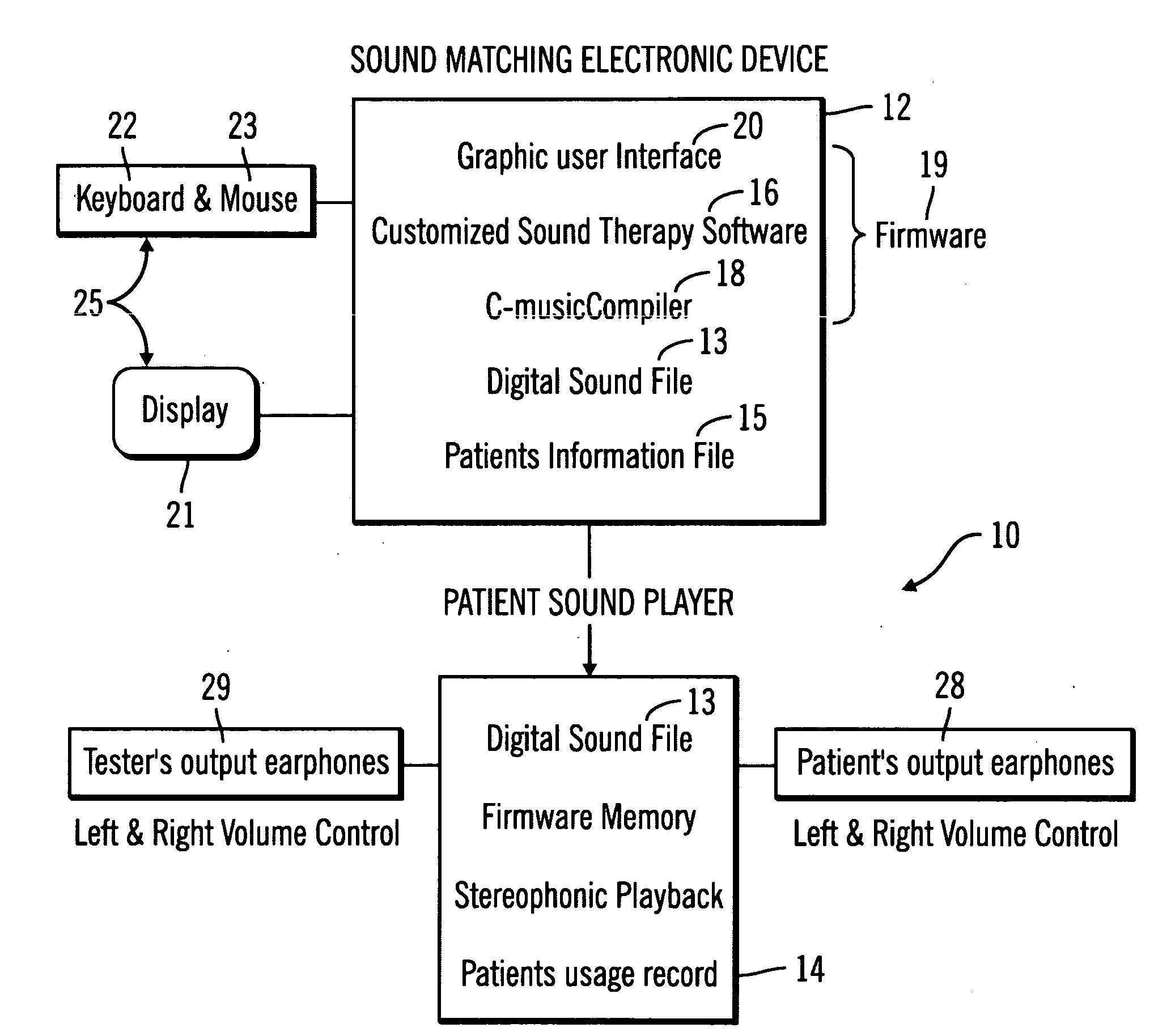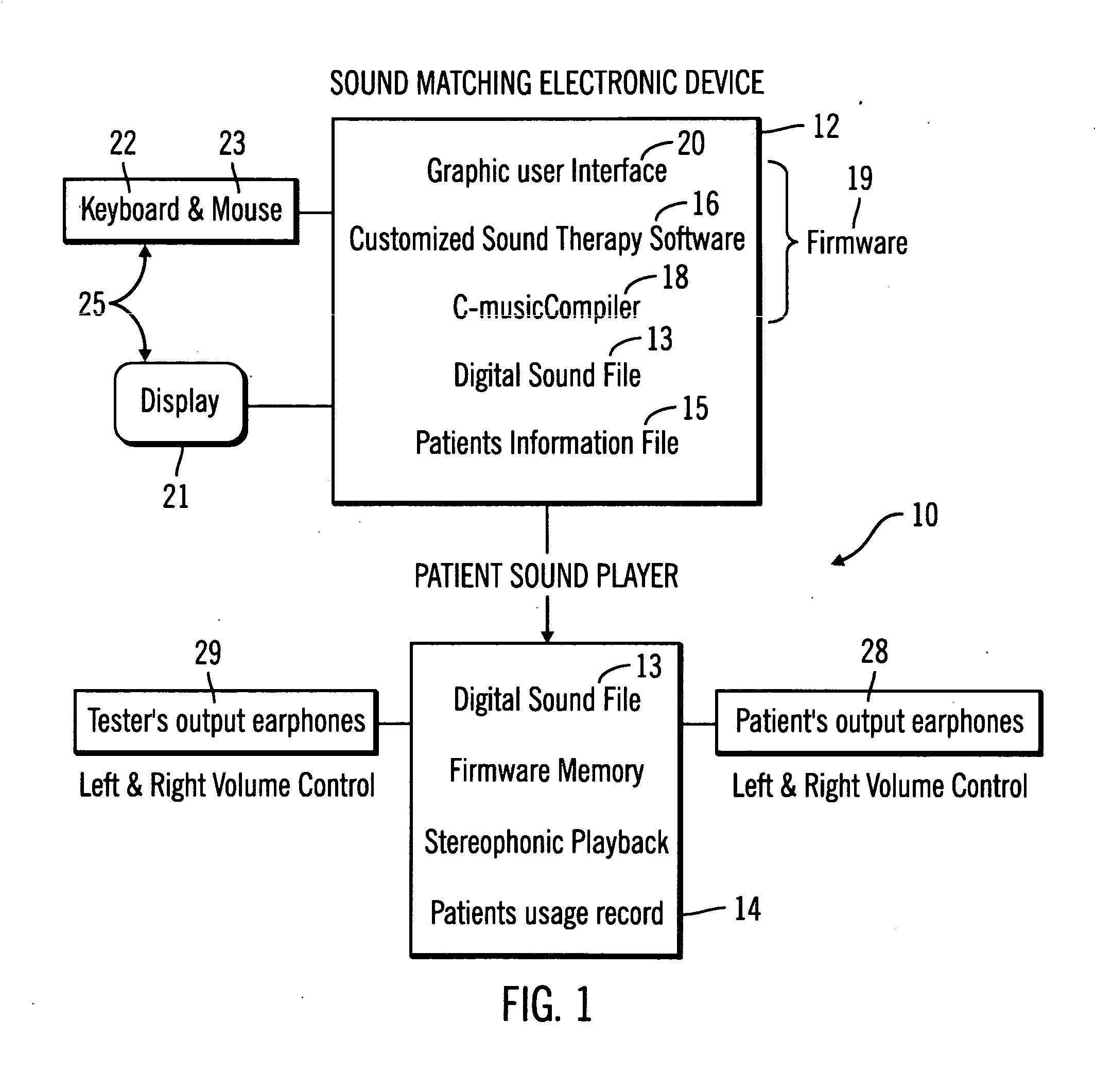System for customized sound therapy for tinnitus management
a sound therapy and customized technology, applied in the field of medical devices, can solve the problems of not teaching tinnitus treatment and management, serious impairment of quality of life, and unintentional tinnitus patients' negative reinforcement, etc., and achieve the effect of high fidelity
- Summary
- Abstract
- Description
- Claims
- Application Information
AI Technical Summary
Benefits of technology
Problems solved by technology
Method used
Image
Examples
case study 1
[0107] Single Tone Tinnitus
[0108]In the simplest case, a patient will have a tinnitus sensation that is precisely matched by a pure tone / sine wave at a specific frequency. Matching the tinnitus sensation then requires only the discovery of the frequency of the pure tone / sine wave that is closest to the patient's tinnitus frequency. Using the GUI 20 shown in FIG. 4, the CST application 16 in the SMS 12 allows up to four test tones to be generated. The CST user / provider can set these tones to any frequencies (both coarse and fine frequency adjustment controls are provided and arbitrary frequencies may simply be typed into the frequency sub windows). The CST matching procedure is based on two sample “forced choice,” wherein the Provider plays two tones for the patient and asks which of them is “closest” in pitch to the patient's tinnitus sensation. The choice of test tones used is based on the provider's judgment according to prior information from any tinnitus evaluations performed an...
case study 2
[0116] Noise-Band and Multiple Component Tinnitus Sensations
[0117]Not all tinnitus patients experience single-tone sensations. Some patients experience a tinnitus sensation that is more adequately matched by a narrowband or a broadband noise, and some patients have a combination of one or more pure tone sensations combined with one or more noiseband components. The CST program provides two types of noiseband components, noise Type I (band limited), and noise Type II (filtered white) noise. In essence, noise Type I sounds a little “rougher” while Type II sounds a little “smoother.” Patients sometimes describe noise Type I as more “scraping” or “cricket-like”, while noise Type II is more like a “hiss” or “rushing stream.” Both of these noises can be generated by the CST application in the SMS 12. In addition to a basic, or center, frequency, each of these noises has a “bandwidth” adjustment that changes its sound quality. A very small (or “narrow”) bandwidth makes these noises more to...
PUM
 Login to View More
Login to View More Abstract
Description
Claims
Application Information
 Login to View More
Login to View More - R&D
- Intellectual Property
- Life Sciences
- Materials
- Tech Scout
- Unparalleled Data Quality
- Higher Quality Content
- 60% Fewer Hallucinations
Browse by: Latest US Patents, China's latest patents, Technical Efficacy Thesaurus, Application Domain, Technology Topic, Popular Technical Reports.
© 2025 PatSnap. All rights reserved.Legal|Privacy policy|Modern Slavery Act Transparency Statement|Sitemap|About US| Contact US: help@patsnap.com



